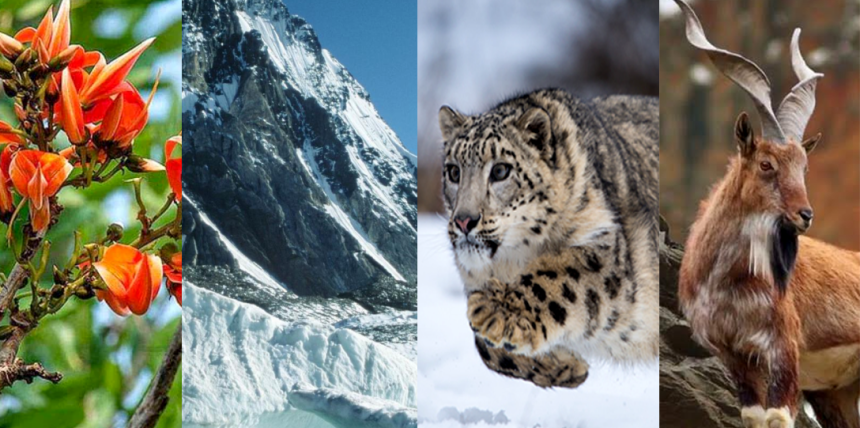The Himalayas, often called the “Third Pole” due to their vast ice reserves, are among the most sensitive ecosystems on Earth. Stretching across five countries, including northern Pakistan, this towering mountain range is not just a scenic wonder — it’s a lifeline for over 1.9 billion people who depend on its rivers, forests, and biodiversity.
- Overview: The Himalayan Ecosystem
- How Climate Change is Affecting the Himalayas
- 1. Melting Glaciers
- 2. Unpredictable Rainfall & Droughts
- 3. Wildlife Migration & Extinction
- 4. Forest Degradation & Shifting Treelines
- 5. Impact on Local Communities
- 🇵🇰 Climate Change in the Pakistani Himalayas
- Scientific Reports & Global Warnings
- What Can Be Done?
- Conclusion
At Rikhtiya, we are committed to “Discovering Secret Facts” about the natural world. Today, we explore how climate change is silently transforming the Himalayan ecosystem, disrupting life for humans and wildlife alike.
Overview: The Himalayan Ecosystem
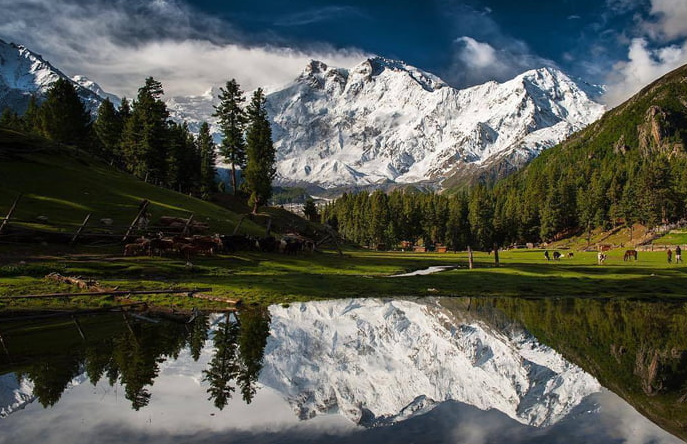
The Himalayan ecosystem spans multiple altitude zones, ranging from lush subtropical forests to snow-covered alpine peaks. It hosts over 10,000 plant species, 300+ mammals, and hundreds of endemic birds, reptiles, and amphibians.
This biodiversity hotspot also acts as a climate regulator and freshwater reservoir for South Asia. Its glaciers feed the Indus, Ganges, and Brahmaputra river systems, sustaining agriculture, energy, and daily life across the region.
But this fragile system is now under threat.
How Climate Change is Affecting the Himalayas
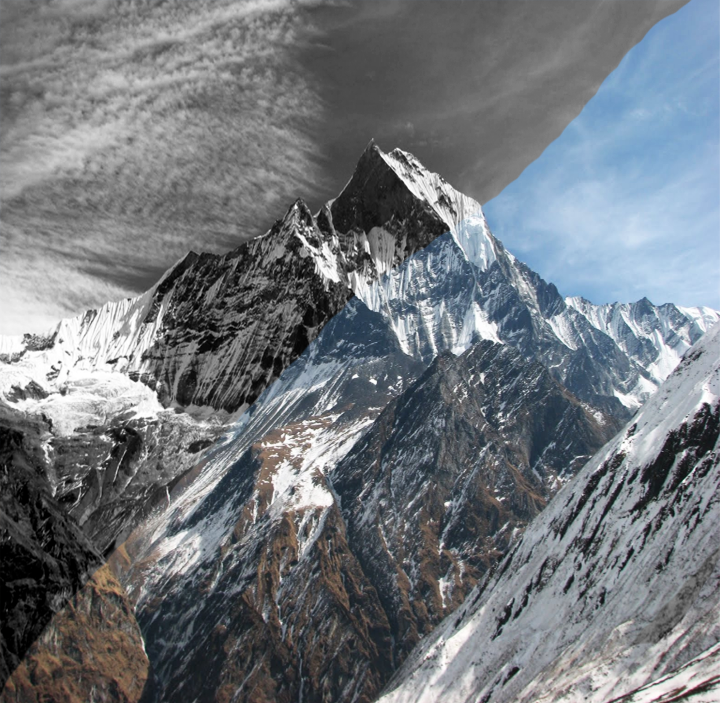
1. Melting Glaciers
The Himalayas are warming nearly twice as fast as the global average. According to the ICIMOD and IPCC, over 30% of Himalayan glaciers could vanish by 2100 if emissions continue at current levels.
- Pakistan’s Siachen and Baltoro glaciers are visibly shrinking
- Glacier retreat leads to glacial lake outburst floods (GLOFs), threatening valleys downstream
- Water flow is becoming unpredictable, disrupting irrigation and hydropower
2. Unpredictable Rainfall & Droughts
Climate change has altered monsoon patterns, causing both droughts and flash floods. Erratic weather:
- Damages crops in Chitral, Gilgit, and Azad Kashmir
- Increases landslides due to unstable slopes
- Affects timing of flowering and pollination, disrupting ecosystems
3. Wildlife Migration & Extinction
As temperature zones shift upward, many species are forced to migrate to higher altitudes or face extinction.
- Snow leopards are losing prey and territory
- Alpine plants are being replaced by invasive lower-altitude species
- Pikas and Himalayan musk deer are struggling to adapt to habitat changes
4. Forest Degradation & Shifting Treelines
Warming temperatures have triggered uphill migration of tree lines, which:
- Reduces native alpine grasslands
- Affects grazing patterns of local livestock
- Weakens natural carbon sinks that regulate temperature
5. Impact on Local Communities
Thousands of families in northern Pakistan depend on glacial meltwater and forest resources. Climate change affects:
- Food security due to shorter growing seasons
- Livelihoods, especially in farming and eco-tourism
- Increased displacement due to flooding and extreme weather
🇵🇰 Climate Change in the Pakistani Himalayas
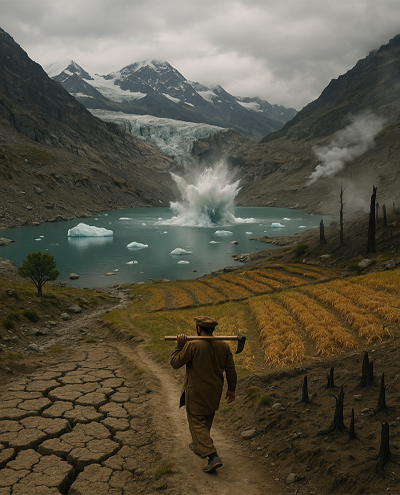
The Pakistani section of the Himalayas, including Gilgit-Baltistan, Chitral, and Azad Jammu & Kashmir, is among the most vulnerable.
- Studies by the Pakistan Meteorological Department (PMD) show temperature rises of 1.5°C over recent decades
- WWF Pakistan reports over 3,000 glacial lakes, 33 of which are at high risk of bursting
- AKRSP (Aga Khan Rural Support Programme) has documented forest loss, water stress, and reduced crop yields
Local farmers report earlier snowmelts, while herders struggle with shrinking pasturelands. Indigenous knowledge is proving valuable in adapting to these shifting conditions — but not fast enough.
Scientific Reports & Global Warnings
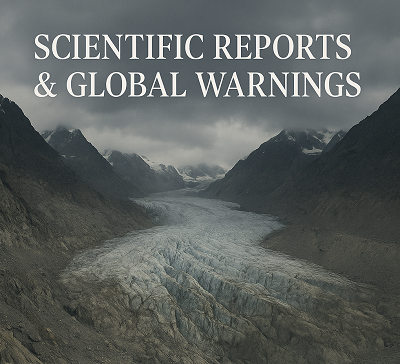
The Intergovernmental Panel on Climate Change (IPCC) and ICIMOD both warn that the Himalayan region could face severe water and food crises within the next few decades.
- A 2023 ICIMOD report highlights that glaciers in the eastern and western Himalayas are receding at alarming rates
- The Himalayas have already lost over 25% of their ice mass since 1980
Often overlooked in global climate talks, the Himalayas deserve urgent international attention due to their regional and global climate impact.
What Can Be Done?
Despite the grim forecasts, multiple conservation and adaptation strategies are showing promise:
- Community-based forest management in northern Pakistan
- Promotion of climate-resilient crops
- Glacial lake monitoring and early warning systems
- Awareness campaigns and eco-tourism to promote sustainable living
Rikhtiya is proud to be part of the growing network of platforms dedicated to educating the public through real, verified, and inspiring environmental stories.
Conclusion
The Himalayan ecosystem is one of the world’s most precious natural assets — and it’s under siege. From melting glaciers to species loss and livelihood disruption, the evidence is clear: climate change is not a distant threat, it’s happening now.
At Rikhtiya, we stand by our mission of “Discovering Secret Facts” — revealing the truths that matter, especially when they concern the planet we all share. The time to act is now. Protecting the Himalayas means preserving life, water, culture, and biodiversity for generations to come.

